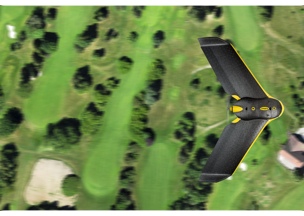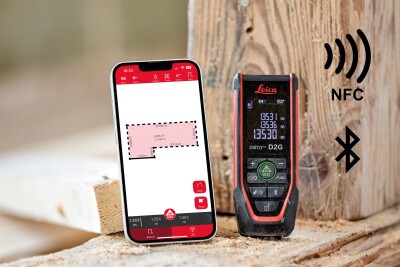Recently, I published the first installment of a series on the current state of unmanned aerial system technology. That installment [click here to read it] summarized some important points from a very well attended plenary session on UAS technology during the 3D Mapping Forum at the Esri User conference. The lively panel discussion featured Baptiste Tripard from Sensefly, Adam Rice from Skycatch, Bret Kugelmass from Airphrame and Andy Nickerson from Aerovel.
Here is the second (and final) installment of my coverage, which should help to enrich your understanding of just how complex and nuanced the discussion of UAS technology is within our marketplace.
What We Know about UAS Legality May Be Wrong
As I mentioned before, this session saw a lot of strong disagreement. Some of these disagreements were along well-worn lines like the photogrammetry vs LiDAR debate, but others were more difficult to settle. The most obvious example was the issue of legality – though practically everyone knows that the FAA will release legal guidelines for the use of UAVs someday, it can tough to tell exactly how legal their use is right at this very moment.
I’ll offer a little bit of context before I dip into the discussion by recapping the common understanding of UAV legality as it stands today:
They are legal in the US for use by hobbyists. This means that they are governed by use rules that require you to keep the UAV away from airports and below 400 feet, as you would a toy aircraft like a small remote-controlled airplane or helicopter. Commercial use remains forbidden in the US unless you obtain a certificate of waiver or authorization (more commonly known as COA).
During the session, Bret Kugelmass from Airphrame made the bold claim that this understanding of UAS legality is flawed. He argued that the FAA’s restrictions may not be as binding as we think:
“Depending on which way you look at it, UAV flight is either completely legal, or not legal at all except if you fly with a COA. The FAA has said certain things about how they allow for flight, and the FAA is actually not the final arbiter of what’s legal and what’s not legal. The federal courts are, and the federal courts have already overturned the FAA. So, that’s another way to look at it.”
[Editor’s note: When Kugelmass says that the FAA has been overturned, he is likely referring to this case (or another like it).]
In speaking to some other companies with a stake in UAS technology on the conference floor, it seemed that Kugelmass wasn’t alone — many believed that the absence of guidelines is not a clear indication that commercial UAV use is illegal, but instead an indication that it just hasn’t been called legal yet. As you might have guessed, this leaves something of a regulatory grey area, so those using UAVs for commercial purposes do so at their own risk.
There May Be an Upside to the FAA’s Regulatory Delays
This grey area can be frustrating for many, especially considering the speed with which the rest of the world has already begun using UAVs, but Kugelmass noted a positive effect of the delay — time for smaller companies to develop experience and familiarity with the technology before more established companies have a chance to take over the market.
“I think those regulations actually hold back the Boeings and the Northrup Grummans and allows us, who operate these light weight vehicles, which are a new type of technology and aren’t even perceived as traditional airplanes, to jump ahead of the curve and operate these, and gain experience, and gain customers, while Boeing and Northrup Grumman are left behind.”
UAS Use May Not Be Embraced by the Public
FAA regulation isn’t the only challenge facing users of UAS technology — there’s also the issue of public opinion. It is not certain if the public will react positively to widespread use of the technology.
For one, the technology retains a very strong association with military force, as many people became aware of unmanned aerial vehicles through news reports of drones used for air strikes or surveillance. Even if referring to these vehicles as “UAVs” and not “drones” helps the technology to shed that association, there may be other lingering public relations problems.
Baptiste Tripard, for instance, mentions privacy concerns and how he thinks the industry should respond to them:
“That’s the reason Google was so involved with satellite imagery, because nobody cares about having a satellite taking a picture of San Francisco or Los Angeles. But if you do the same thing with a UAV, many people would be concerned about privacy or safety. And actually, one of the next steps is that every one of us should promote the use of these new means to get geospatial data. Because there should not be any difference between using an aircraft, a satellite, or a UAV, even if it’s over San Francisco.”
In following from Tripard’s remark, a common sentiment in the room was that the public may focus on the malicious uses of the technology, but it is the industry’s responsibility to focus on the ways that the technology can be used to improve our lives.
Esri’s Wayne Chambliss, who was moderating, agreed. But he argued that the public’s concerns are legitimate and worthy of consideration:
“There are some fundamental differences [between a satellite and a UAV]. When you fly a UAV over a building, you don’t just see the roof, you can see what’s inside. You can fly it inside the building depending on what kind of UAV it is, you can get access to much more data that has to do with human beings, so the privacy considerations multiply. And I don’t think it’s something that we can just wave away, it’s something that we have to work with, it’s something that we have to internalize as an industry, so that from the get go we can not only mitigate very legitimate fears on the part of consumers and the average citizen, but also the possibility of exploitation and things going wrong.”
Later, Skycatch’s Adam Rice made the observation that “privacy has not been adequately addressed by the FAA, in terms of how they’re going to integrate” the technology. When an audience member argued that it’s not the FAA’s mandate to address privacy issues, Rice argued “[The FAA’s] primary concern right now is privacy and safety. And they will go after anybody who gets in other people’s business and have a safety risk.”
So we can see that the operation of UAVs on a farm may not be a problem, but would it be simple to use a UAV to collect data over San Francisco? Clearly there are still quite a few issues to work out as the technology is integrated into American airspace.






